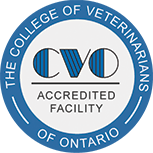Illustrated Articles
-
Pulmonary hypertension means that the peak blood pressure in the arteries of the lungs is much higher than normal. Several abnormalities can lead to high blood pressure in the arteries of the lungs and many of the underlying reasons involve the heart. There are many signs of pulmonary hypertension including exercise intolerance, difficulty breathing with or without exertion/exercise, rapid breathing, coughing, spitting up blood from the lungs, fainting, and more. There are many potential causes of pulmonary hypertension. Several medications are available to treat your dog. It is important to maintain a low-stress environment while any underlying cardiac or respiratory disease is treated and managed. Activity may need to be restricted. It is essential to monitor dogs with pulmonary hypertension for worsening of clinical signs. Periodic physical examinations, blood pressure monitoring, and ultrasound evaluations of the heart will also be important. The long-term prognosis is very guarded for dogs with pulmonary hypertension.
-
The horse's hoof is a very complex structure. The tough outer wall surrounds layers of sensitive laminae ('leaves') that support, nourish with blood and, in turn, cover the underlying pedal bone.
-
A successful life with a family dog starts with great training for your puppy. Planning to set puppies up for success, learning how to use management, positive reinforcement, luring, capturing, and shaping will help owners train their puppies successfully. Positive puppy training and socialization classes are also beneficial for healthy puppies over eight weeks of age.
-
Life with puppies is complicated, and all puppies will sometimes do things their owners find problematic. Using management, planning, supervision, and positive reinforcement for the right behaviors will help puppies succeed, and owners better enjoy their companions.
-
Every puppy will become a dog who needs veterinary care, grooming, and handling. Starting in puppyhood, owners can use positive training techniques to teach their puppies how to accept and enjoy restraint, basic procedures, and home husbandry.
-
Training basic cues such as "sit", "stand", and "lie down" can set the foundation for all future training. These basic skills are useful behaviors that encourage good manners and tolerance of husbandry and veterinary care. Training your dog to understand cues improves communication with your puppy and improves the predictability of all interactions. Training methods based on positive reinforcement include luring, capturing and shaping.
-
Providing puppies with positive socialization experiences may prevent the development of future fears. Puppy socialization must be done gently to avoid accidentally causing fear. Puppies are most primed for socialization before the age of 14 weeks. By taking precautions, some careful socialization can and should be done even before puppies have completed their entire vaccination series.
-
Infection in the foot is by far, the most common cause of acute (sudden), single-leg lameness in the horse. Infection results in painful inflammation and pus (abscess) formation.
-
Pyelonephritis is an upper urinary tract infection involving the kidneys and ureters. Many cats have no clinical signs when they have pyelonephritis, although they may have signs of lower urinary tract disease. Pyelonephritis is usually caused by a bacterial infection that moves up the urinary tract from the bladder to the kidneys. Cats with sudden pyelonephritis do well and return to normal health unless concurrent complications exist.
-
Pyoderma is a bacterial skin infection that can affect all areas of the skin, including skin folds, often seen as red, pus-filled pustules. Treatment may require oral or topical medications and it is always a good idea to practice good hygiene. Pyoderma carries a good prognosis for recovery but recurring or chronic cases may require longer treatment and additional testing to determine an underlying cause.



